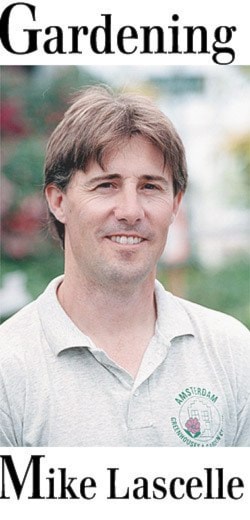I cut my lawn for the last time two weeks ago, and judging by the weather, I can confidently say that winter has finally arrived.
I am not talking about the face-freezing, bury-my-car-in-snow and ‘heating bill that withers the bank account’ season, which places like Winnipeg have, but winter nonetheless.
If we really want to rub it into those long-suffering Prairie relatives of ours, we could remind them that only 14 days ago it was still T-shirt weather here in Coastal B.C., but that would just be cruel.
Truth be told, we live in a rare corner of Canada where we actually have a winter gardening season – a place of year-around Anna’s Hummingbirds and outdoor ice rinks (Robson Square) that need to be covered over to protect them from the rain.
The season begins as the last of the leaves fall and the winter camellias begin to burst forth in fragrance and colour. These beauties are a little mixed-up as far as their true lineage (C. sasanqua, C. hiemalis, C. vernalis) is concerned, as many are hybrids.
But you can expect flowers from late fall through to January, depending on the cultivar.
On warmer days, you’ll also notice that many of these are quite fragrant, including ‘Jean May’ (dbl. shell pink), ‘White Doves’ (dbl. white) and ‘Apple Blossom’ (single white w/ pink edges).
‘Yuletide’ (single red) is a seasonal favorite, while ‘Bonanza’ and ‘Shishigashira’ both have double deep rose blooms that hold their colour well, even when fading.
Skimmia japonica is another cold-weather performer, but it also personifies the battle of the sexes, and I am sorry to say that the males are winning hands down. It all goes back to that bigger is better scenario and, of course, I am referring to the size of the flower buds, which are much larger than the females.
The dormant buds resemble berries and often turn red (especially with ‘Rubella’ and ‘Rubinetta’) in the cold, opening to fragrant white flowers in March. While we are on the subject of fragrance, few shrubs can match the shade-loving Christmas Box or Sarcococca, which comes in dwarf (S. humilis) and arching upright forms (S. confusa or ruscifolia). All have glossy dark green foliage and tiny white flowers (often hidden in the leaves) that emit a powerful Jasmine fragrance from December through to February.
Equally scented but much larger in scale is the impressive deciduous shrub Viburnum x bodnantense ‘Dawn’, which bears terminal clusters of pale pink tubular flowers (useful for feeding overwintering hummingbirds) that are borne from November through to April, making it the longest-blooming of the winter flowering shrubs.
White Forsythia (Abeliophyllum distichum) is another sweetly scented deciduous shrub, although it is a bit unruly in its growth habit – it bears white (occasionally pink-tinted) forsythia-like blooms in late winter.
The Winter Hazels (Corylopsis) also bloom late winter to early spring, with pendulous pale yellow racemes dangling from the bare branches.
These are sometimes mistaken for Witch Hazel (Hamamelis), although the latter is often quite fragrant and the strap-like petals are borne throughout the entire shrub.
Your standard choices here are the yellow Chinese Winter Hazel (H. mollis) or some of the x intermedia hybrids such as ‘Jelena’ (orange), ‘Arnold Promise’ (yellow) or ‘Diane’ (red).
Last but not least on my winter favorite’s list is the Chinese Paper Bush, or Edgeworthia chrysantha, with the most popular cultivar being ‘Gold Rush’ (yellow/white), a local introduction brought to us by Piroche Plants of Pitt Meadows.
Mike Lascelle is a local nursery manager and gardening author (hebe_acer@hotmail.com).
